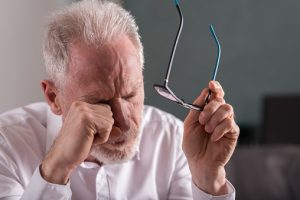
For women, a drop in estrogen is what brings on menopause. In men, the decline of the male hormone testosterone is not nearly as drastic, so symptoms are usually not attributed to it. In fact, lifestyle habits and other factors are more so to blame.
Although testosterone deficiencies are more common with age, testosterone generally declines at a steady rate of about two percent annually.
So, instead of using the term “male menopause,” it should be called andropause.
What are the symptoms of andropause?
Symptoms related to andropause begin to occur between the ages of 40 and 50. Symptoms include depression, mood swings, loss of sex drive, insomnia or difficulty sleeping, loss of muscle mass, erectile dysfunction, and the redistribution of fat, causing it to accumulate in the belly.
Many of these symptoms result from psychological and lifestyle factors. For example, work can cause stress and anxiety, which may promote overeating, drinking, smoking, and other unhealthy lifestyle factors.
Can andropause be treated?
Experiencing andropause doesn’t have to be an inevitable part of aging. If you begin to experience the symptoms of andropause, you can speak to your doctor about what you can do about it.
Your doctor will run some tests to uncover the cause of your symptoms and treat that. For example, if your symptoms are a result of stress, a treatment plan will be recommended to help reduce it. Furthermore, working toward living a healthier lifestyle — regular exercise, eating well, not smoking — can help greatly.
Your doctor may also check your testosterone levels to ensure that your symptoms aren’t a result of low testosterone. But if they are, there are many treatments available to help give your testosterone a boost.
Many of the symptoms related to “male menopause” can easily be treated through healthy lifestyle interventions. As mentioned, talking to your doctor can help you stop feeling sluggish and return you to feeling like a man.
Related: Is male menopause real? Low testosterone level signs and treatment tips